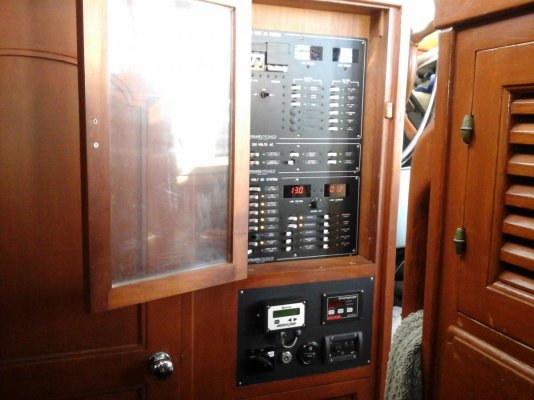I should be able to figure this out but I don't want to tear into the boat to look at the configuration on the shorepower connection on the boat.
The boat has a 125/250 50 amp shorepower connection... When I look at the ac panel there is a double pole breaker that serves as the main disconnect for the ac service. One pole is the neutral the other is hot and feeds the rest of the ac circuit breakers in the panel.... My question is what happens to the other ac leg? the boat does not use 220. It's a 4 wire cord so 220 is at the boat... is the other hot input just not connected at boat? Any one else seen this configuration where 220 is supplied but only 110 is used.
The boat has a 125/250 50 amp shorepower connection... When I look at the ac panel there is a double pole breaker that serves as the main disconnect for the ac service. One pole is the neutral the other is hot and feeds the rest of the ac circuit breakers in the panel.... My question is what happens to the other ac leg? the boat does not use 220. It's a 4 wire cord so 220 is at the boat... is the other hot input just not connected at boat? Any one else seen this configuration where 220 is supplied but only 110 is used.



